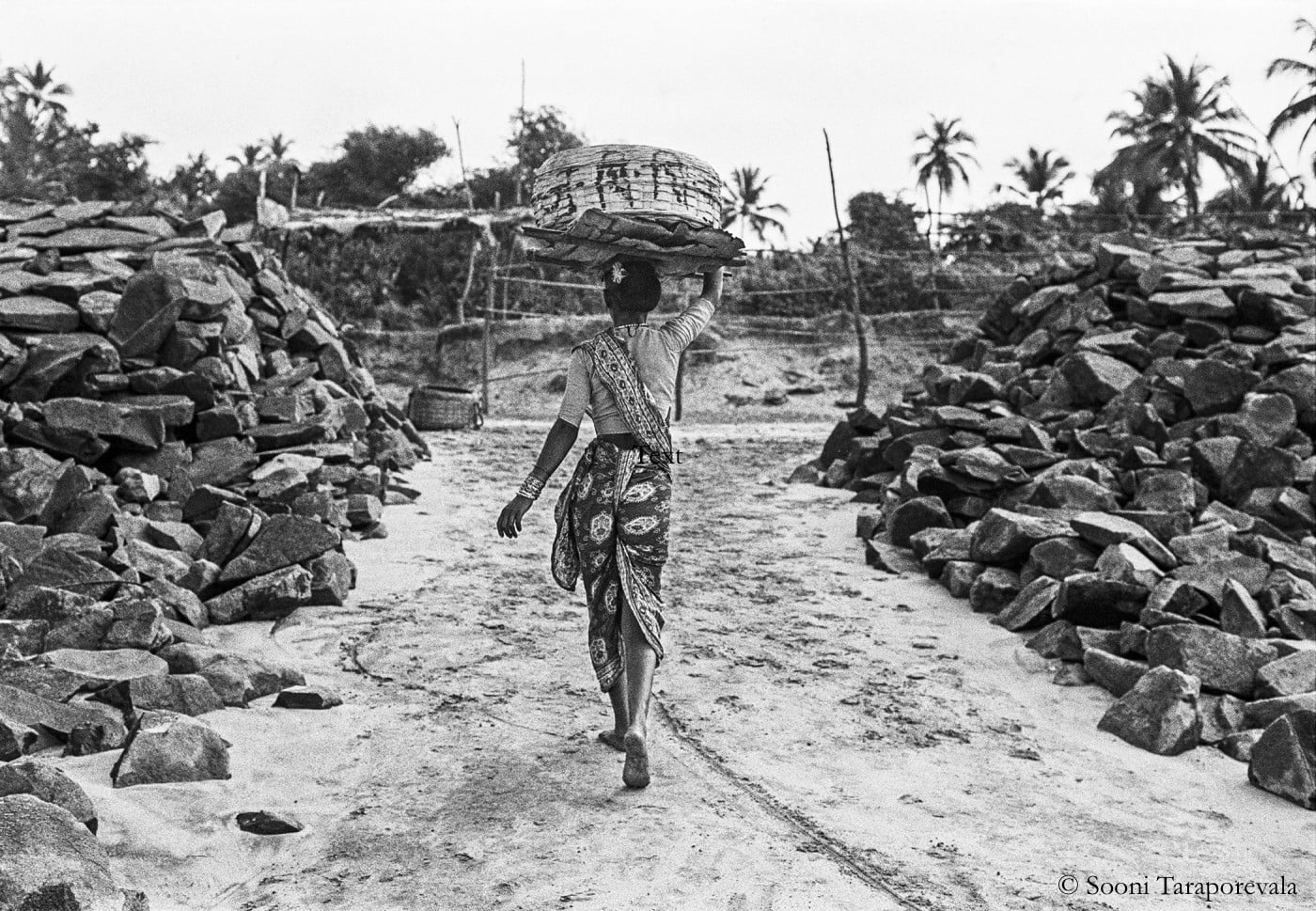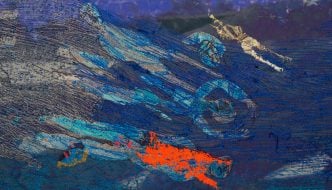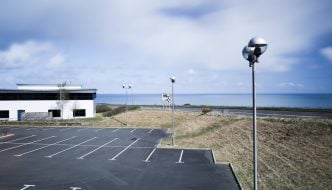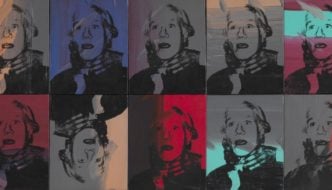
Kamatipura, Bombay 1987, by Sooni Taraporevala. Courtesy of the artist and Sunaparanta.
A pigtailed girl of about nine stands on a make-shift stage, her gangly limbs outstretched as if she were an amateur flamenco dancer about to whirl into motion. From one hand trails a strip of wine-dark fabric and at her bare feet lies a mobile phone, carefully placed on the floor. There are sequins on her t-shirt sewn into the shape of a camera, they sparkle brightly under the light. She looks joyful, delighted to be the centre of attention.
This is the scene captured in Sooni Taraporevala’s photograph Happy at a Navjote, Mumbai, 2015 currently on display at the Whitworth as part of the Mumbai-based artist’s first UK solo exhibition. The image, which depicts a scene from an induction ceremony traditional in Zoroastrianism, encapsulates Taraporevala’s photography work, providing a deeply personal insight into the people and visual culture of the Parsi community to which she belongs.
Set across a tucked-away three-wall space on the gallery’s Upper Promenade, the exhibition features 30 black and white images captured between 1979 to 2016. Taken on medium format Leica and Nikon cameras, the photographs feature Mumbai inhabitants both in stylised poses and caught unawares, and range from intimate portraits of prematurely wizened street children to the covert documentation of hugely glamorous Mumbai parties thrown for the city’s well-heeled cultural elite.

Waiter at the Royal Opera House, Mumbai 2016, by Sooni Taraporevala. Courtesy of the artist and Sunaparanta.
Taraporevala is an artist who loves contradictions, visually butting Indian and Western fashions, text (as seen on surrounding street signs), and even literal skin tones right up against one another. The body of work speaks of the incongruities between the old Eastern values and Americanised modes of living. In one photograph a camel is lead by a trader past a sleek car, in another an elderly, bearded man reads a newspaper reclining on a tatty hessian mat, sheltered from the sweltering sun by the wing of a light aircraft that we as the viewer have no idea how he has stumbled across.
Taraporevala’s prior training as a filmmaker and stint living in the US (in her early twenties the artist joined the Cinema Studies Department at New York University and went on to produce an Oscar-nominated film, Salaam Bombay! in 1988) is highly evident in her photography work. She edits and crops with a shrewdly cinematic eye: window apertures are used as framing devices; the spindly outline of a palm tree provides a graphic slash across the picture plane. The formal handling of ratio, texture, and form, combined with a filmic approach to social commentary owes a debt to Paul Strand, the great photography modernist who lived through the advent of cinema. In Taraporevala’s figures, we see Hollywood archetypes: street boys assume the guise of wannabe gangsters; in a picture of a woman carrying a vessel up to a deserted beach road, her curved hips are as sensual as any screen siren’s. In the context of Mumbai, the subjects’ aspirations towards glamour are incongruous with the oftentimes gritty, harsh street settings in which they appear. The resultant images offer both dreamily wistful and starkly realistic vantage points of the city.
Taraporevala’s show launches a three-year programme of co-commissions and exhibitions called New North and South at the Whitworth, which promote the work of eleven arts organisations from across the North of England and South Asia, aiming to facilitate intellectual and artistic dialogue between the participating venues. The vibrant, complex, and tender pictures that Taraporevala presents of her Mumbai co-habitants pose intriguing questions about the complicated visual bonds we as cultures both share and diverge on.

Koli Grace, Bombay 1976, by Sooni Taraporevala. Courtesy of the artist and Sunaparanta.
Filed under: Art & Photography
Tagged with: female photographer, Home in the City, India, Indian photographer, Mumbai, photography exhibition, Sooni Taraporevala, The Whitworth



Comments